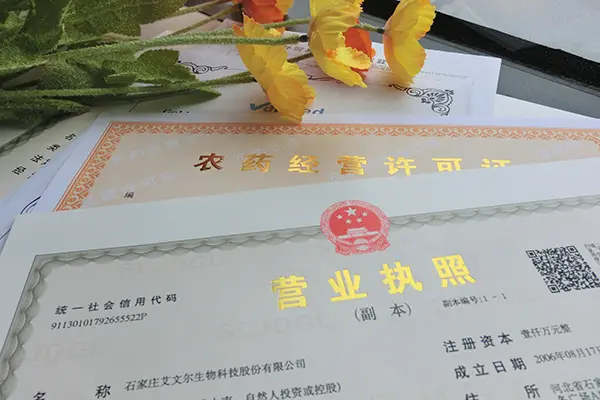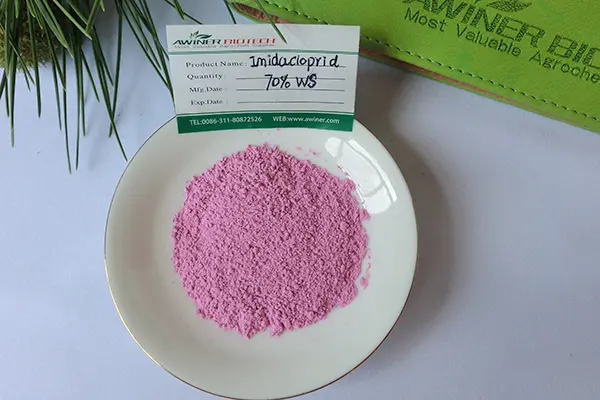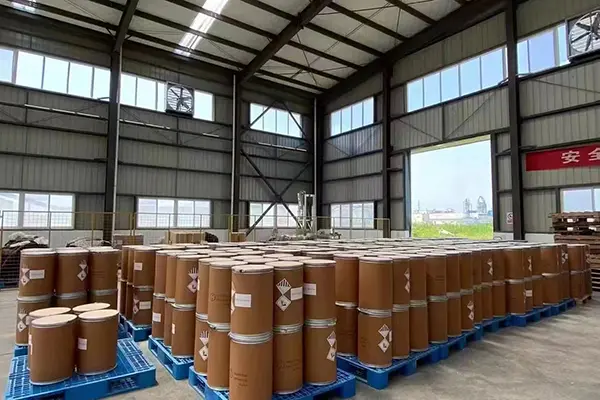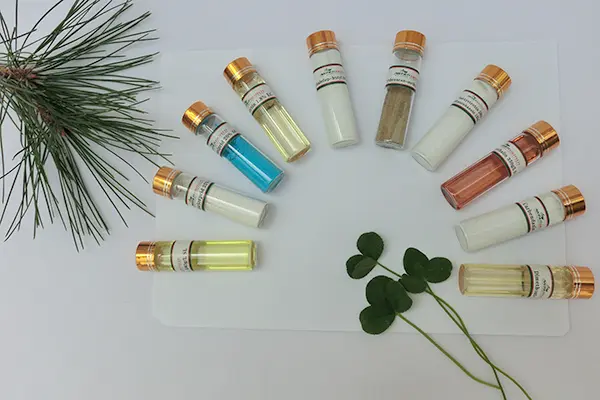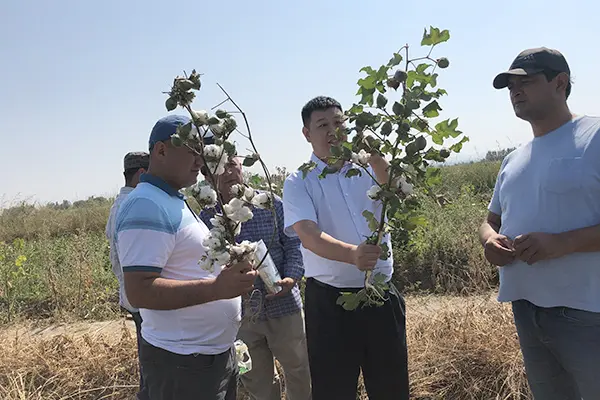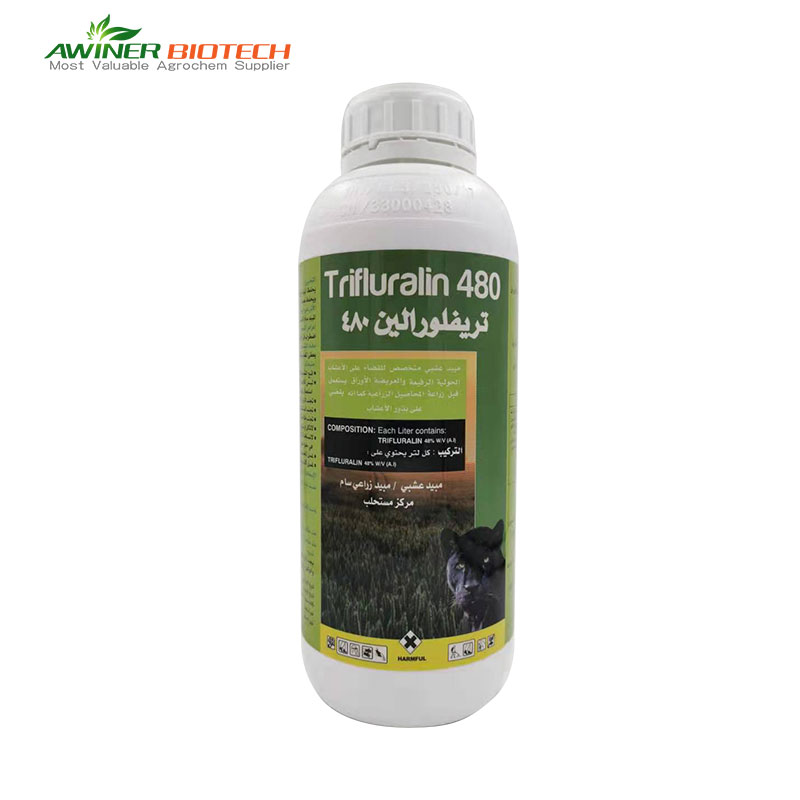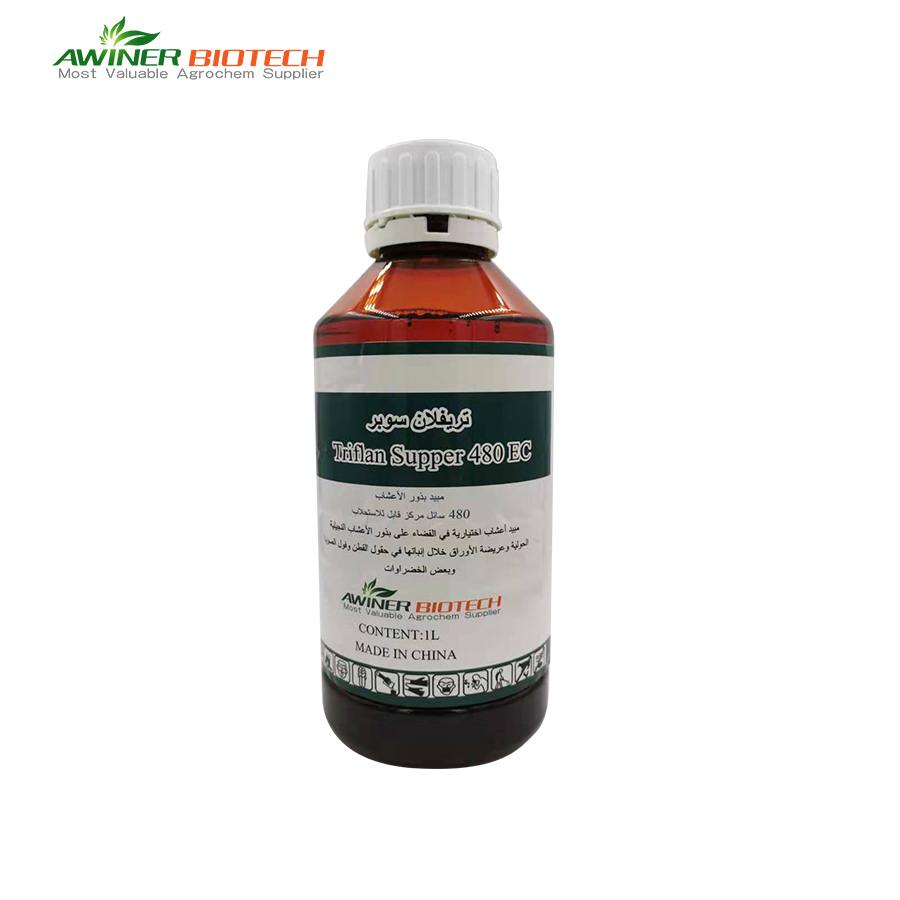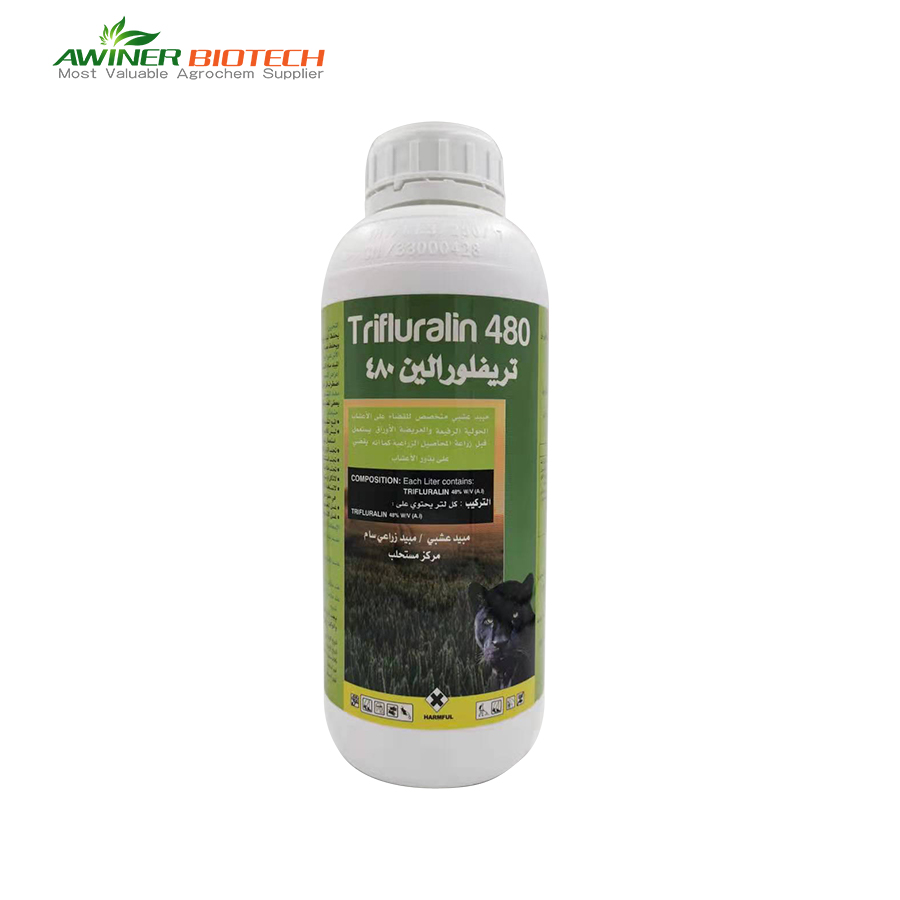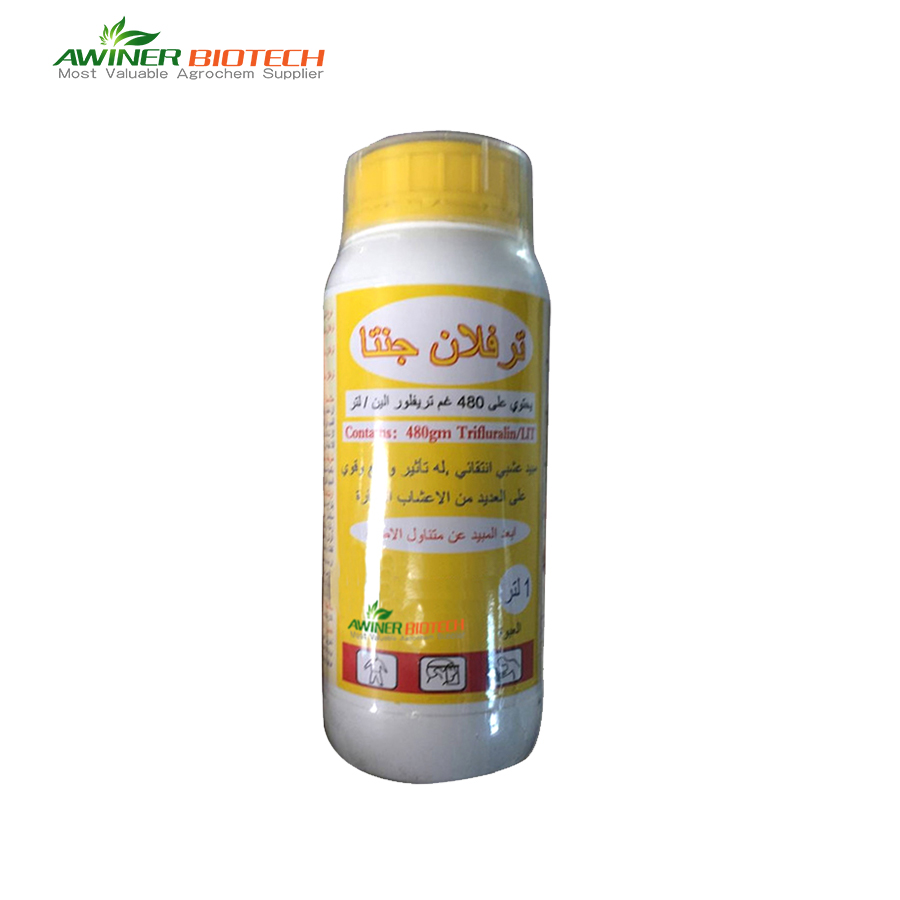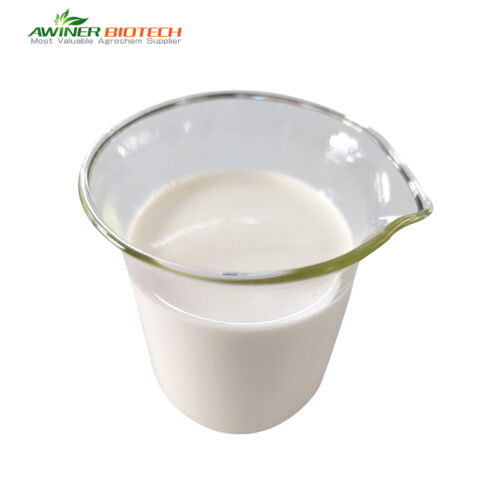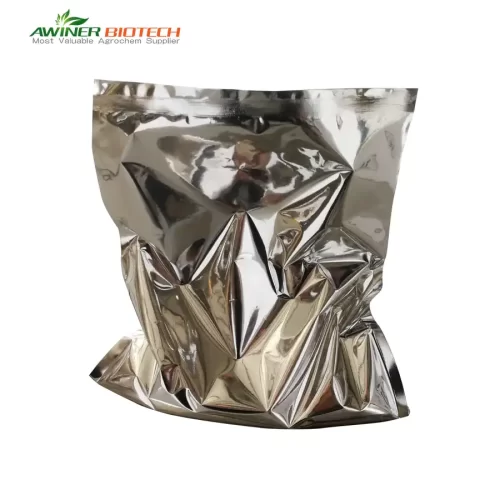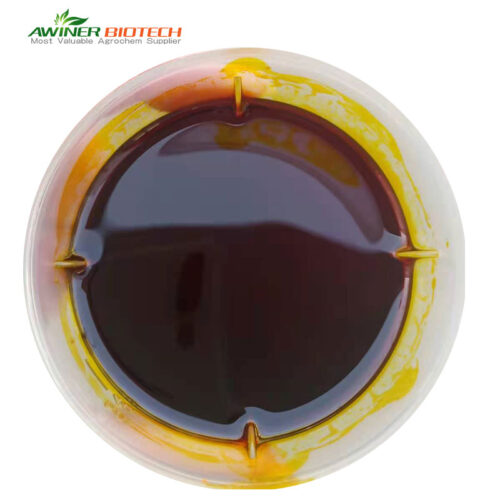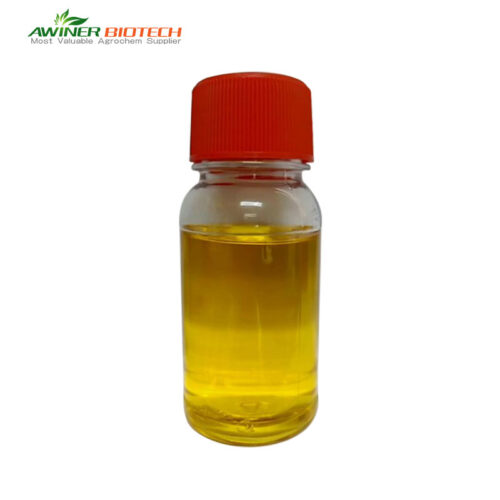Trifluralin |
|
| Dosage form | 480g/L EC |
| Packing | Liquid:50ml、100ml、250ml、500ml、1L、5L、10L、20L Solid:10g、50g、100g、250g、500g、1kg、5kg、10kg、25kg |
| Formulation | Customized |
| Label | Customized |
| Crop | Cotton field |
| Certification | SGS、 ISO 、BV |
| Delivery time | 20-30 days |
| Mixture products | |
| Payment terms |  |
The herbicide trifluralin is suitable as a pre-emergent herbicide in drylands. Can be used in cotton and soybean fields. Trifluralin can remove monocotyledonous weeds and annual broadleaf weeds in cotton and other fields.
Guidelines for use of trifluralin vs pendimethalin
Trifluralin vs pendimethalin is generally applied before planting or pre-emergence. The recommended application rate is 5.6–11.3g of active ingredient per 100 square meters, mixed with 0.6–4.5kg of water and sprayed onto the soil. For transplanted cotton seedlings, apply 48% EC (emulsifiable concentrate) at 11–15mL per 100 square meters after seeding and soil coverage. For dryland rice, apply 48% EC at 30–60mL per 100 square meters during the 2–3 leaf stage.
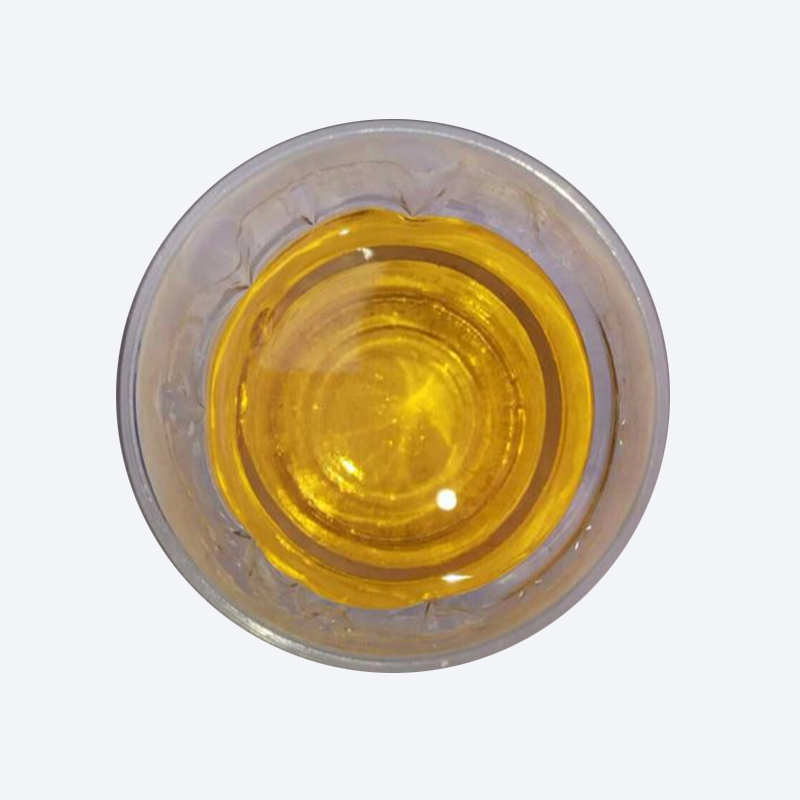 |
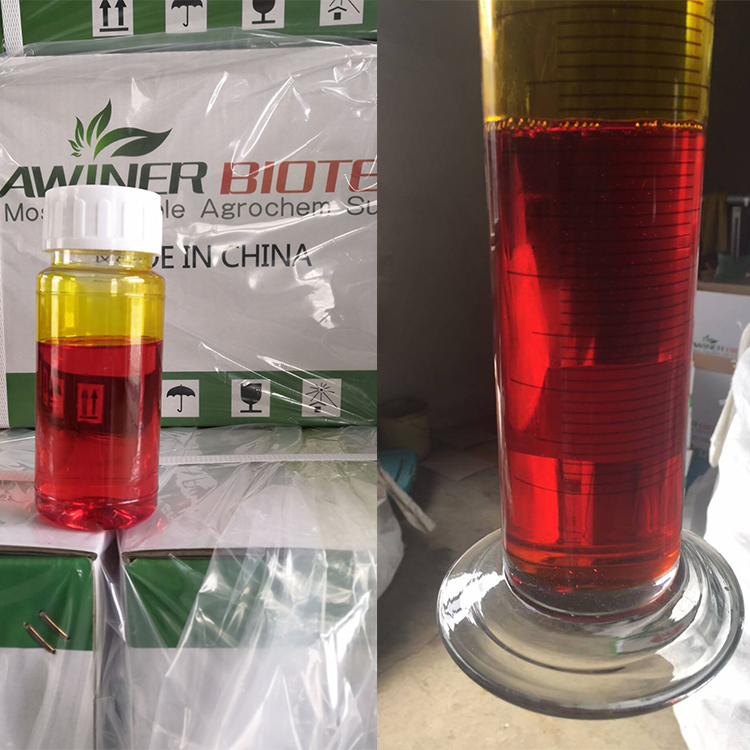 |
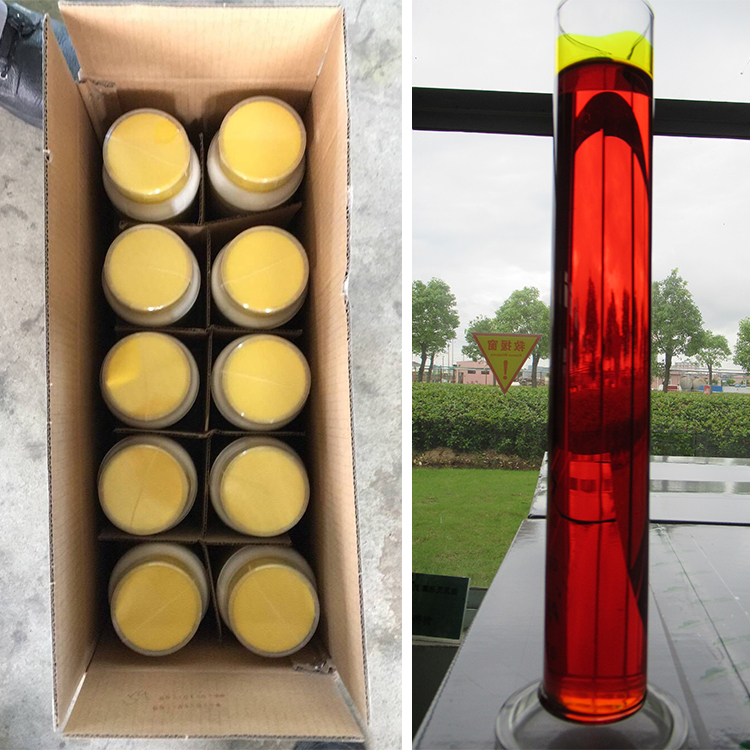 |
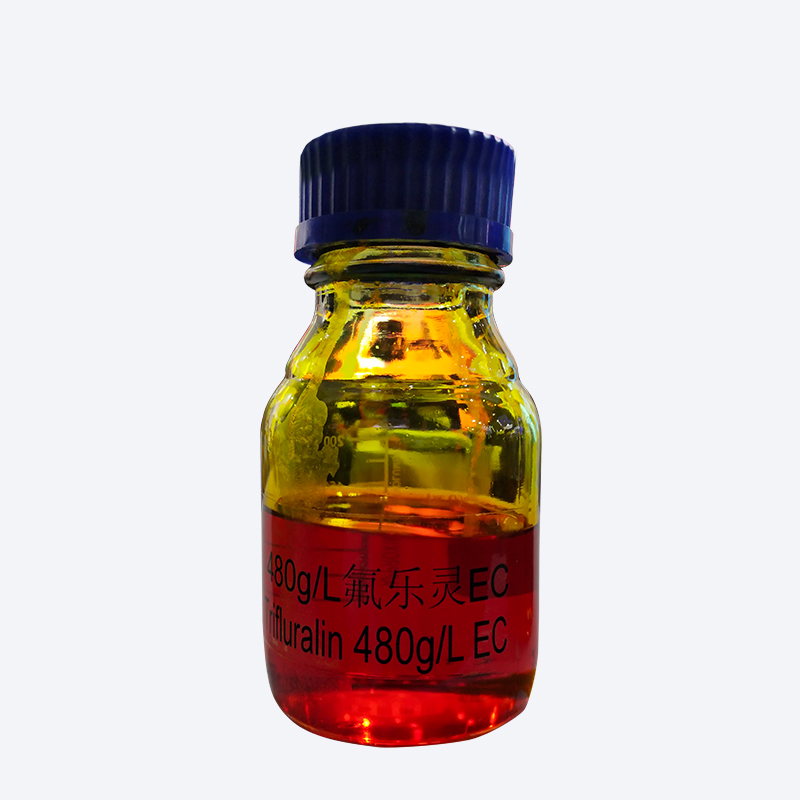 |
Maximizing Effectiveness And Yield
To prevent photodegradation, incorporate Trifluralin into the soil within 8 hours of application, achieving up to 95% weed control. For soybeans, use 48% EC at 19–23mL per 100 square meters, mix with water, and incorporate into the soil. In the southern regions, sow seeds the next day; in the northern regions, wait 5–7 days before sowing. This versatile herbicide ensures your crops remain free from weeds, maximizing yield and productivity.
<About Awiner Biotech>
